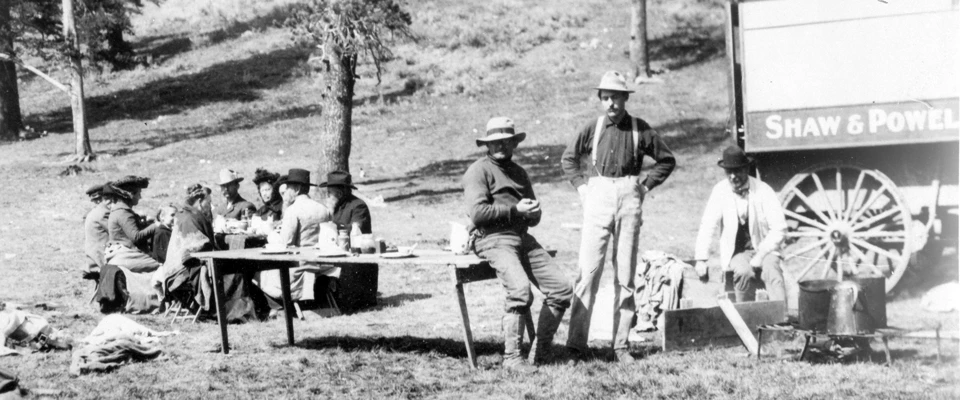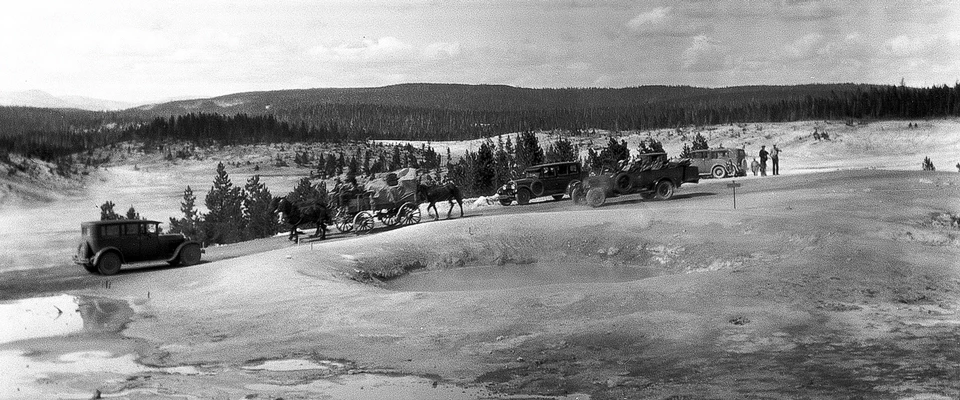|
In the same year the National Park Service was created, transportation modes transitioned in Yellowstone National Park. It was the last year that horse-drawn wagons were allowed on park roads. Despite years of resistance from park managers, the first automobiles were officially allowed into Yellowstone in 1915, and visitation that year soared. In 1916 it was becoming clear that the automobile would change the Yellowstone National Park experience forever.

NPS / YELL 36791
In earlier days, visitors arrived by train to West Yellowstone or Gardiner, Montana. Tourists traveled by stagecoach, wagon, or horseback to see sights around the park. As automobiles became more prolific, accidents between the machines and horses increased. Car tires could not manage on the old wagon roads, leaving visitors stranded. Even as the wonders of Yellowstone became more accessible to the average American family, it also became necessary to provide paved roads and services for the increase in visitors and their automotive needs.

NPS / YELL 19448 Travelers nearly a century ago, in 1916, were here for the same reasons you are. Visitors flocked to Old Faithful geyser and eagerly awaited each eruption. After long hours bumping along in wagons or on horseback, they climbed carefully along the rim of the Grand Canyon of the Yellowstone River and reached out to feel the spray from the Lower Falls overlook. Each step you take in Yellowstone lands on the footprints of the generations before you. Travelers who could afford them, stayed in the grand hotels at Lake, Mammoth, Canyon, and Old Faithful. Others camped at one of the “permanent” camps or from their own vehicles, enjoying campfires and cookouts. More Information
|
Last updated: April 18, 2025
